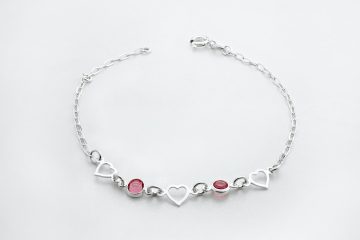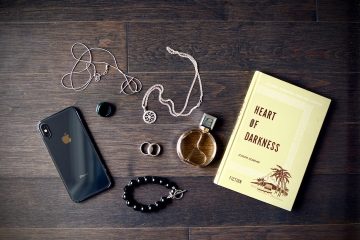Paracord bracelets have gained immense popularity in recent years. These versatile accessories not only serve as fashion statements but also have practical uses in survival situations. Whether you are an outdoor enthusiast, a prepper, or simply someone who appreciates unique handmade jewelry, crafting a paracord bracelet can be a rewarding and fulfilling experience. However, many people are often deterred from attempting this craft due to the misconception that it is time-consuming and complicated. In this article, we aim to demystify the process of crafting a paracord bracelet by breaking it down into simple steps and shedding light on the time it truly takes.
1. Introduction to Paracord Bracelets
Before we delve into the process of crafting a paracord bracelet, let’s first understand what exactly it is. A paracord bracelet is a woven bracelet made from a strong and durable nylon cord commonly known as paracord. Originally used in parachute suspension lines, paracord has since found its way into the hands of crafters who appreciate its versatility and strength. The bracelets are not only fashionable but can also be unraveled in emergency situations to provide a long cord that can be used for various purposes such as building a shelter, securing items, or creating a makeshift tourniquet.
2. Gathering the Materials
To get started with crafting your paracord bracelet, you will need a few essential materials. The first and most crucial component is, of course, the paracord itself. You can find paracord in various colors and patterns, allowing you to personalize your bracelet to your liking. Additionally, you will need a pair of scissors, a lighter, and a buckle or clasp to secure the bracelet. These materials are readily available online or at your local craft store.
3. Choosing the Right Design
Paracord bracelets come in various designs, with each design requiring a different set of techniques and time investment. It is essential to choose a design that matches your skill level and the time you are willing to dedicate to the project. Simple designs, such as the Cobra Knot or King Cobra Knot, are great options for beginners as they are relatively easy to learn and can be completed in a shorter amount of time. On the other hand, more intricate designs like the Fishtail or Dragon’s Tongue may require more time and practice to master.
4. Measuring the Length
Before you start weaving your paracord bracelet, you need to determine the appropriate length for your wrist. A common rule of thumb is to measure your wrist circumference and add an additional inch or two to allow for a comfortable fit. Keep in mind that the length of the finished bracelet will be shorter than the initial length of the cord due to the weaving process. Once you have the desired length, you can proceed to cut the paracord accordingly.
5. Starting the Weaving Process
To begin weaving your paracord bracelet, you will need to secure one end of the cord to the buckle or clasp. This end will act as the starting point for your weaving. Depending on the design you have chosen, you will follow specific weaving patterns to create the bracelet. The Cobra Knot, for example, involves crossing the left cord over the middle cords and passing the right cord over the left one, then under the middle cords, and through the loop created on the left side. This process is repeated until the desired length is achieved.
6. Taking Your Time
Crafting a paracord bracelet is not a race; it is a process that requires patience and precision. While it may seem tempting to rush through the weaving process, taking your time and being mindful of each step will result in a more polished and professional-looking bracelet. Avoiding mistakes and having to undo previous steps will save you time in the long run. Remember, crafting is a form of art, and art takes time and dedication.
7. Adding the Finishing Touches
Once you have completed the desired length of your bracelet, it’s time to finish it off. To do so, you will need to secure the loose ends of the paracord by melting them slightly with a lighter. This will prevent the bracelet from unraveling. Be careful not to burn the cord or yourself in the process. After securing the ends, attach the remaining side of the buckle or clasp to complete your paracord bracelet.
8. The Time Investment
Now that we have discussed the steps involved in crafting a paracord bracelet, let’s address the time it takes to complete this project. The time can vary depending on factors such as the complexity of the design, your skill level, and the amount of time you can dedicate to the craft. For a simple bracelet design like the Cobra Knot, an average crafter can complete it within 30 minutes to an hour. More intricate designs may take a few hours or even several days to finish, especially if you are a beginner. It’s important to remember that the time invested in crafting a paracord bracelet is not wasted but rather an opportunity for self-expression and creativity.
Conclusion
Crafting a paracord bracelet is a rewarding and creative endeavor that allows you to showcase your skills and personal style. By following the steps outlined in this article, you can demystify the process and overcome any hesitation you may have had about embarking on this craft. Remember to gather the necessary materials, choose a suitable design, measure the length, weave with precision, and take your time. With practice, you will become more proficient and efficient, enabling you to create stunning paracord bracelets in a shorter amount of time. So why wait? Start crafting your own paracord bracelet today and embrace the joy of handmade creations.
FAQs (Frequently Asked Questions)
Q1. Can I use different materials instead of paracord for crafting a bracelet?
A1. While paracord is the most commonly used material for crafting these bracelets, you can experiment with other types of cords or ropes. However, keep in mind that the strength and versatility of paracord make it an ideal choice for survival situations.
Q2. Are paracord bracelets only suitable for outdoor activities?
A2. Not at all! Paracord bracelets have evolved beyond their original purpose and are now popular fashion accessories. They can be worn in various settings, from casual outings to formal events, adding a touch of uniqueness to your style.
Q3. Can I wash my paracord bracelet?
A3. Yes, you can wash your paracord bracelet. However, it’s important to remove any metal components, such as buckles or clasps, before washing. Use mild soap and lukewarm water to gently clean the bracelet, and allow it to air dry completely before wearing it again.
Q4. Can I undo a paracord bracelet once it’s woven?
A4. Yes, paracord bracelets can be unraveled if needed. Simply untie the knot or undo the clasp to release the woven cord. This feature makes them practical in emergency situations where you might need a long cord for various purposes.
Q5. Can I personalize my paracord bracelet with beads or charms?
A5. Absolutely! Adding beads or charms to your paracord bracelet is a great way to personalize it and make it truly unique. You can incorporate them into the weaving process or attach them to the finished bracelet using jump rings. The possibilities for customization are endless.




